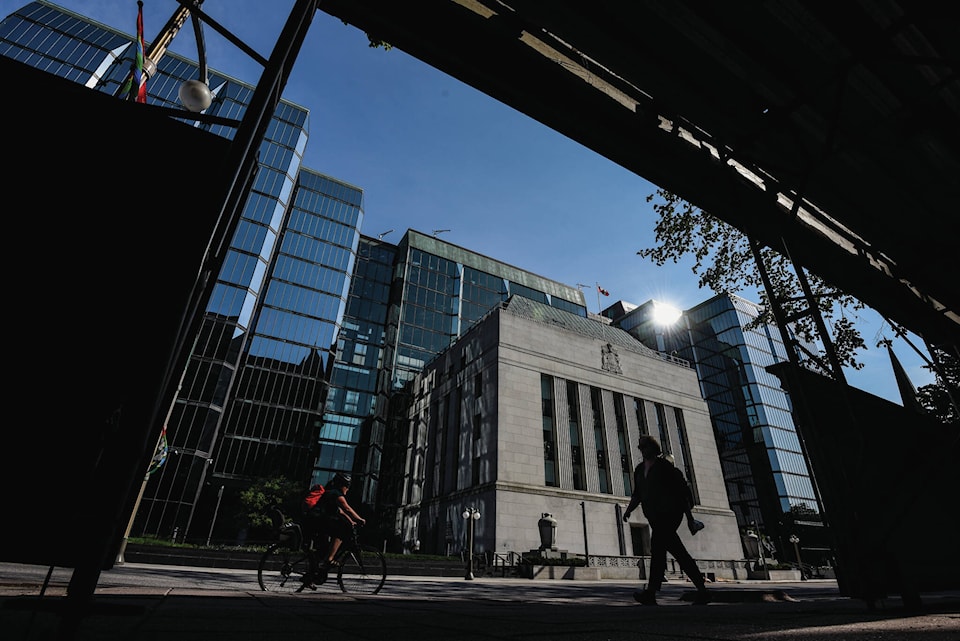~BW Uzelman
…And the bank is not done yet!
The Bank of Canada released a statement last week announcing the increase of the overnight target rate to 4¾ %. Some economists were surprised. Some expected the rate hike “pause” to remain until at least July. The Bank cited “excess demand” for the action, though it was a little more complicated than that.
The bank started with a review of international developments. “Globally, consumer price inflation is coming down … but underlying inflation remains stubbornly high.” Economic growth is softening with increased rates, but major central banks are signaling rates may have to rise more to control inflation, said the statement. Economic growth has “stalled” in Europe, but core prices continue to rise, and the US economy is slowing, but consumer spending and the job market remain strong.
In Canada, the economy grew robustly by 3.1% in the first quarter. The statement notes strong growth in consumption spending and strong demand for labour. As well, it warned that spending on interest-sensitive goods (like furniture and appliances) was up, and that housing market activity has increased more recently. “Overall, excess demand in the economy looks to be more persistent than anticipated.”
The bank still expects the inflation rate to decline to about 3% in the summer, but it is concerned, with core inflation rates having lingered at 3½ -4% for several months, CPI inflation may get stuck above the target of 2%. The bank will continue to watch, “excess demand, inflation expectations, wage growth and corporate pricing behaviour.” The bank ends by expressing its commitment to restoring price stability.
Economists are almost unanimous that further rate increases are coming. Stephen Brown of Capital Economics said that the interest increase is “unlikely to be the last”. He added, “the bank noted that … ‘monetary policy was not sufficiently restrictive to bring supply and demand back into balance and return inflation sustainably to the 2% target.’ It’s hard to see how a 25 point hike will materially change that assessment unless CPI and labour market data … is materially weaker than we expect.”
It is difficult to determine exactly what caused the demand for goods and services to rise above the economy’s ability to produce them. But government spending is definitely a factor, in Canada and other developed countries. Governments reacted to the pandemic with increased spending and deficits. This resulted in more money chasing a reduced supply of goods and services, as the global economy began to recover. Canada, in fact, created more deficit and debt than did other countries. After the pandemic, the Liberal Government in Ottawa lacked the prudence to stem the spending flow, and deficits continue.
Philip Cross, a senior policy analyst at the Fraser Institute, demonstrated how much spending has increased from the pre-pandemic period. In 2019-20 federal program spending totaled $338.5 billion, and the current budget projects program spending in 2023-24 to be 28.9% above that level at $435.9 billion. Cross adds that much of the money transferred by government to households during the pandemic was saved, and was spent in 2022. He relates that Chrystia Freeland herself referred to this as “pre-loaded stimulus”.
Cross believes that inflation began with supply shocks in the economy, but that large deficits have likely fueled it. He predicts, “Without restraint … tight monetary policy alone will have difficulty returning inflation to its target rate.” Further, he warns that tight monetary policy, in the absence of fiscal restraint, risks inflation persisting while interest rates remain high and the economy stagnates. That sounds familiar. “Stagflation” was a word created in the 1970’s to describe that situation then. As Cross relates, it was only remedied by applying both fiscal and monetary restraint in the 1980’s.
The Bank of Canada, prior to the hike, had frequently cautioned that inflation could be “stickier” than expected. It now has resolved that is so. Deputy Governor Paul Beaudry, in a post-hike speech, stated, “When we looked at the recent dynamics in core inflation combined with ongoing excess demand, we agreed the likelihood that total inflation could get stuck well above the 2-per-cent target had increased.” Central bankers don’t speak directly for fear they will reveal too much, but the message is clear enough.
Beaudry reacted to the ongoing strength of the economy with words like “surprised” and “unexpected”. The bank did not anticipate this situation. When the extent of the economic resilience became clear, the bank determined the inflation fight was not over, and ended the rate hike pause.
As the bank resumes raising interest rates, only healthy fiscal restraint by government will ensure that Canada regains price stability and retains the potential for economic growth.
bruce
Bruce W Uzelman
I grew up in Paradise Hill, a village in Northwestern Saskatchewan. I come from a large family. My parents instilled good values, but yet afforded us, my seven siblings and I, much freedom to do the things we wished to do. I spent my early years exploring the hills and forests and fields surrounding the village, a great way to come of age.
I attended the University of Saskatchewan in Saskatoon. I considered studying journalism at one point, but did not ultimately pursue that. However, I obtained a Bachelor of Arts, Advanced with majors in Economics and Political Science in 1982.
Contact: urbangeneral@shaw.ca
Like us on and follow us on .



